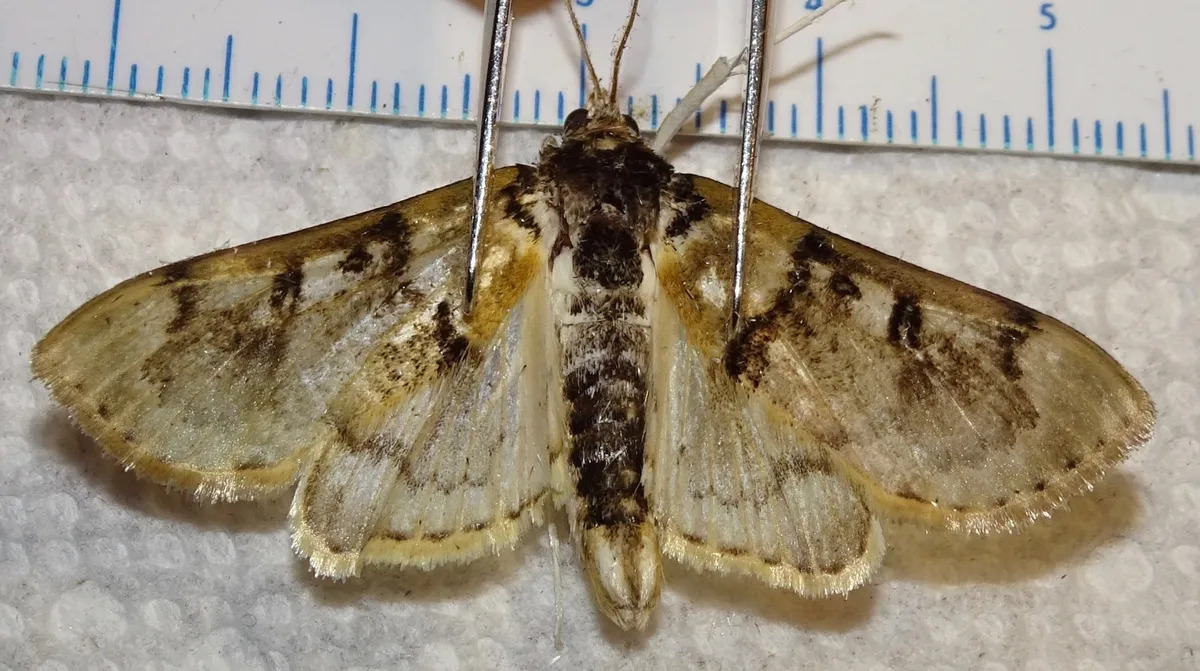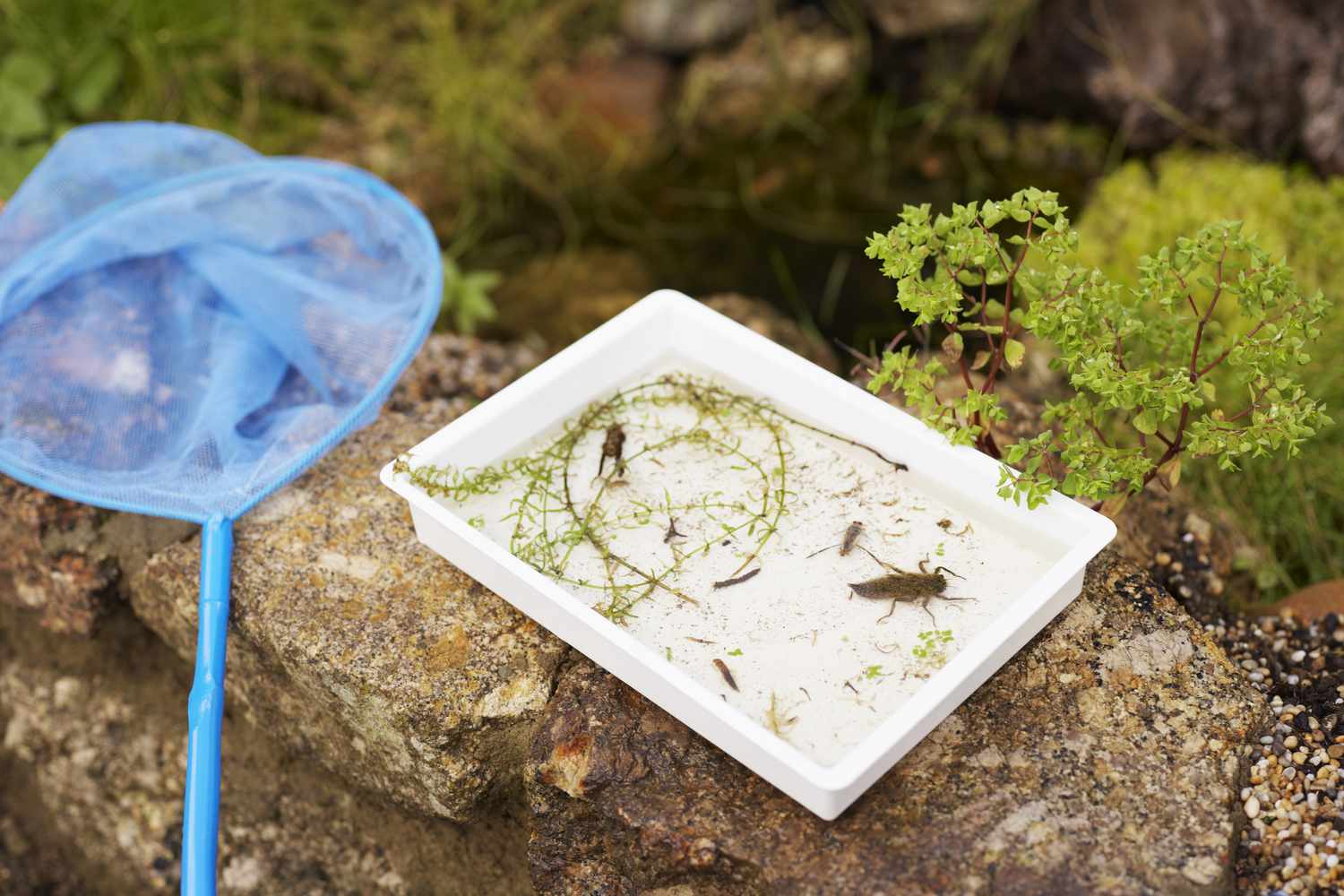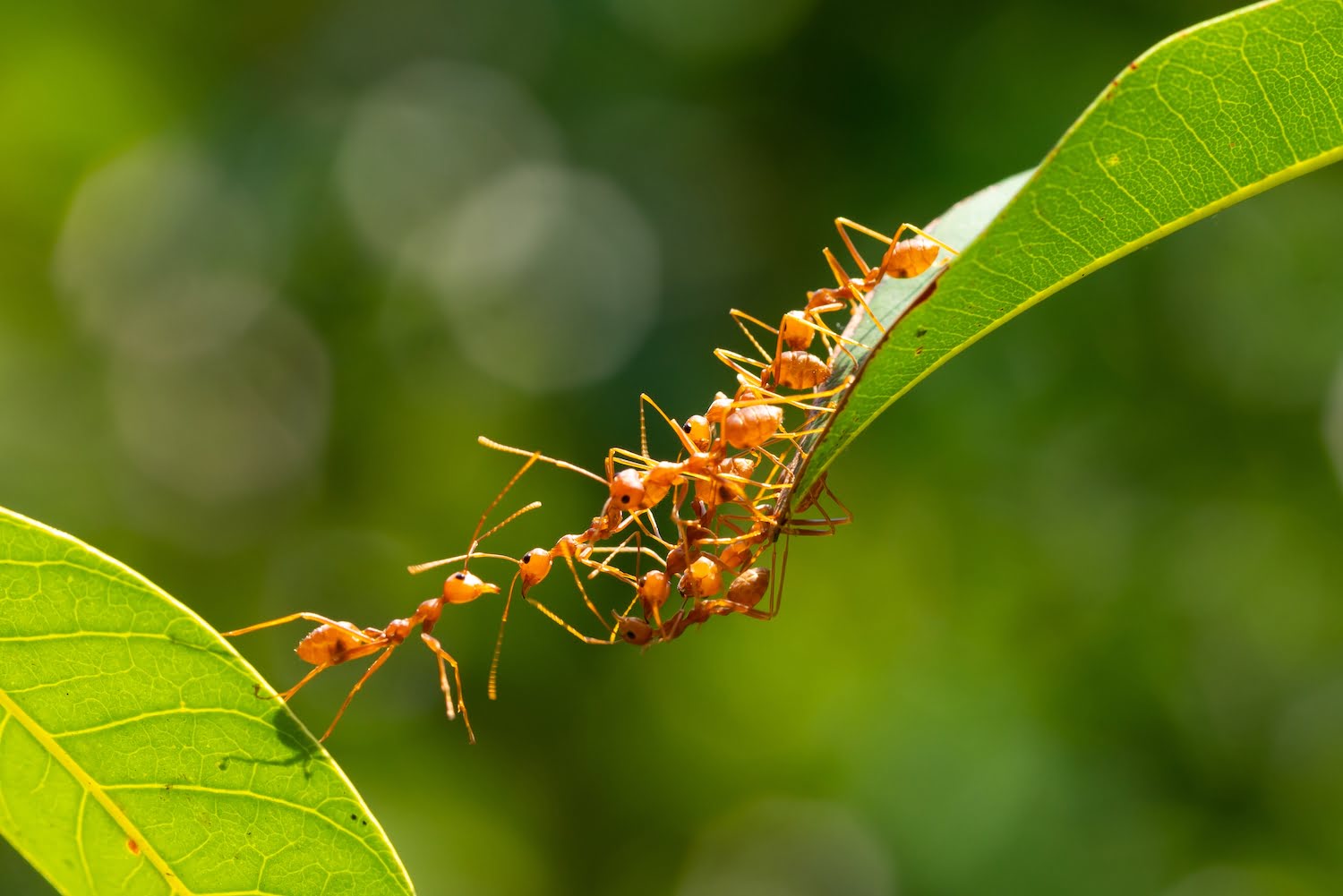Home>Gardening News and Trends>Latest News>Explain How Rodents And Insects Spread Biological Hazards.


Latest News
Explain How Rodents And Insects Spread Biological Hazards.
Modified: January 22, 2024
Stay updated with the Latest News on how rodents and insects spread biological hazards. Learn more about the risks and prevention methods to keep yourself and your environment safe.
(Many of the links in this article redirect to a specific reviewed product. Your purchase of these products through affiliate links helps to generate commission for Chicagolandgardening.com, at no extra cost. Learn more)
Table of Contents
Introduction
When it comes to the spread of biological hazards, rodents and insects play a significant role. These small creatures, often deemed as pests, have the ability to carry and transmit various diseases that pose serious health risks to humans. Understanding how rodents and insects spread these biological hazards is crucial for implementing effective preventive measures.
Rodents, such as rats and mice, are known carriers of pathogens and can contaminate our environment and food sources. They have the ability to spread diseases through their droppings, urine, saliva, and even their fur. Similarly, insects like mosquitoes, flies, and cockroaches act as vectors for many infectious diseases.
This article will delve into the ways in which rodents and insects contribute to the spread of biological hazards, the common diseases they carry, the methods of transmission, and the importance of prevention and control measures. By gaining a deeper understanding of these aspects, we can better protect ourselves and our communities from the potential dangers they pose.
Rodents as Spreaders of Biological Hazards
Rodents, particularly rats and mice, have long been associated with the spread of biological hazards. These small mammals have a remarkable ability to carry and transmit a wide range of diseases that can be detrimental to human health.
One of the primary ways in which rodents spread biological hazards is through their droppings and urine. These bodily fluids can contain various pathogens, including bacteria and viruses, which can contaminate surfaces and food sources. Coming into contact with these contaminants can lead to the transmission of diseases such as salmonellosis, leptospirosis, hantavirus, and rat-bite fever.
In addition to their bodily fluids, rodents can also transmit diseases through fleas, ticks, and mites that infest their fur. These parasites can carry diseases such as Lyme disease, tularemia, and plague, which can then be transmitted to humans when they come into contact with the rodents or their nesting areas.
Furthermore, rodents have a habit of gnawing on various objects, including electrical wires, pipes, and food packaging. This not only causes structural damage but also increases the risk of contamination as they come into contact with different surfaces. For example, if a rat chews through a water pipe, it can lead to water contamination, potentially spreading diseases such as leptospirosis.
It is worth mentioning that not only do rodents pose a direct threat through the spread of diseases, but they can also indirectly contribute to the proliferation of other pests. For instance, rats and mice are a favorite food source for certain insects, such as mosquitoes and fleas. By providing a steady food supply, rodents attract these insects, which can then carry and transmit their own set of diseases to humans.
Overall, rodents play a significant role in spreading biological hazards. Their ability to carry diseases through their bodily fluids, fur, and interaction with various objects is a cause for concern. Implementing adequate prevention and control measures is essential to minimize the risk of these diseases and protect public health.
Insects as Spreaders of Biological Hazards
In addition to rodents, insects also play a crucial role in the spread of biological hazards. These small creatures, such as mosquitoes, flies, and cockroaches, serve as vectors for numerous infectious diseases, posing a significant threat to human health.
Mosquitoes are perhaps one of the most well-known insect vectors. They transmit diseases such as malaria, dengue fever, Zika virus, and West Nile virus. Female mosquitoes feed on the blood of infected individuals and subsequently transmit the pathogens to other individuals they bite. These diseases can cause severe symptoms and, in some cases, even lead to fatalities.
Flies, particularly house flies, are also known carriers of disease-causing organisms. They are attracted to decaying organic matter, garbage, and sewage, where they pick up pathogens that can cause diseases such as diarrhea, cholera, dysentery, and typhoid fever. House flies can contaminate food and surfaces by landing on them after coming into contact with these pathogens, thereby spreading the diseases to humans.
Another common insect vector is the cockroach. Cockroaches are known to carry various pathogens, including bacteria, viruses, and parasites. They can contaminate food and surfaces by defecating or regurgitating on them. Diseases such as Salmonellosis, E. coli infections, and asthma can result from exposure to these pathogens.
Fleas are yet another group of insects that act as vectors for diseases. For instance, fleas that infest rodents can carry and transmit bubonic plague, also known as the “Black Death.” When a flea bites an infected rodent and subsequently bites a human, the bacteria Yersinia pestis is transmitted, leading to potentially severe illness if not treated promptly.
It is important to note that the ability of insects to spread diseases is not limited to their bites alone. Some insects, such as the kissing bug, can transmit diseases through their feces. When the bug bites and feeds on blood, it defecates near the bite wound, introducing the pathogens into the bloodstream when the individual unconsciously scratches the area.
Insects, like rodents, can also contribute to the proliferation of other pests. For example, mosquitoes can serve as hosts for parasitic worms called filarial worms. When a mosquito bites an individual already infected with these worms, it becomes a carrier and can transmit the worms to other individuals through subsequent bites. This can result in diseases such as lymphatic filariasis and onchocerciasis.
Overall, insects are powerful vectors for the transmission of biological hazards. Their ability to transmit diseases through bites, contact with contaminated surfaces, or even through their feces poses a significant risk to human health. Implementing effective prevention and control measures is crucial in safeguarding against these diseases and mitigating their impact.
Common Biological Hazards Spread by Rodents and Insects
Rodents and insects are carriers of various pathogens, resulting in the spread of numerous biological hazards. Understanding the common diseases they transmit is crucial in identifying the risks they pose to human health.
One of the most well-known diseases spread by rodents is salmonellosis. This bacterial infection is caused by the Salmonella bacteria, which can be found in rodent droppings, urine, and contaminated food. Symptoms include diarrhea, abdominal pain, and fever, and severe cases can require medical intervention.
Hantavirus is another notable disease linked to rodents, particularly deer mice. Inhalation of aerosolized particles from rodent excreta can lead to hantavirus pulmonary syndrome, which can be severe and even fatal. Symptoms may include fever, muscle aches, and shortness of breath.
Leptospirosis, transmitted by the bacterium Leptospira, is commonly associated with both rodents and certain insects. Humans can become infected through contact with contaminated water or soil, typically through wounds or mucous membranes. Symptoms can range from mild flu-like illness to severe infection that affects the liver, kidneys, and other organs.
Plague, historically known as the “Black Death,” is an infectious disease transmitted by fleas that infest rodents, especially rats. Caused by the bacterium Yersinia pestis, the disease can cause severe systemic symptoms, including high fever, swollen lymph nodes, and pneumonia. Without prompt treatment, the plague can be deadly.
Dengue fever, Zika virus, and chikungunya are three viral diseases commonly transmitted by mosquitoes. These diseases can cause symptoms such as high fever, severe joint pain, rash, and in some cases, neurological complications. Outbreaks of these diseases are a significant public health concern in many parts of the world.
Malaria, caused by Plasmodium parasites, is transmitted through the bites of infected mosquitoes. This devastating disease affects millions of people worldwide, causing symptoms such as fever, chills, and flu-like illness. Severe cases can lead to organ failure and death if left untreated.
Other diseases spread by insects include Lyme disease, transmitted by ticks, which can cause a range of symptoms, including fatigue, joint pain, and neurological issues if not detected early. Typhoid fever, possibly transmitted by flies, causes high fever, abdominal pain, and gastrointestinal complications.
These are just a few examples of the numerous diseases that rodents and insects can spread. It is important to stay informed and take appropriate measures to prevent exposure to these biological hazards, such as practicing good hygiene, eliminating potential breeding grounds for mosquitoes, and implementing effective pest control strategies.
Methods of Transmission
The transmission of biological hazards by rodents and insects can occur through various methods. Understanding how these pathogens are transmitted is crucial in implementing effective prevention and control measures.
Direct contact with the bodily fluids of rodents is a common method of transmission. Rodents’ droppings, urine, saliva, and even their fur can contain infectious pathogens. Humans can come into contact with these fluids through direct handling of rodents, contamination of surfaces, or consuming food and water that has been contaminated by rodent excreta.
In the case of insects, transmission typically occurs through bites. Mosquitoes, flies, ticks, and other biting insects can transmit pathogens into the bloodstream of humans during their feeding process. The pathogens can then cause a variety of diseases, ranging from viral infections like dengue fever and Zika virus to bacterial infections like Lyme disease.
Another method of transmission is through contaminated surfaces and objects. Rodents and insects can contaminate food, utensils, and other items by coming into contact with them or leaving behind their feces or bodily fluids. When humans touch these contaminated surfaces and objects and then touch their face, mouth, or eyes, they can inadvertently introduce the pathogens into their own bodies.
Airborne transmission can also occur in certain cases. For instance, hantavirus can be transmitted when airborne particles from rodent droppings and urine are inhaled. Similarly, in the case of respiratory infections like tuberculosis, rodents and insects can contribute to the spread of the disease by contaminating the air with their excreta or by carrying the bacteria or pathogens on their bodies.
Some diseases, like malaria and West Nile virus, have specific transmission methods unique to the vectors involved. Mosquitoes transmit malaria when they inject infected saliva into the bloodstream during a blood meal. Ticks transmit Lyme disease when they bite and remain attached, allowing the bacteria to enter the human body over an extended period.
It is important to note that humans can also play a role in the transmission of these biological hazards. For example, humans can inadvertently transport rodents or insects from one area to another, facilitating the spread of diseases. Additionally, improper waste management and sanitation practices can create environments conducive to the growth and spread of pests, further increasing the risk of transmission.
Understanding the various methods of transmission is crucial in implementing effective prevention strategies. By targeting these modes of transmission, such as practicing good hygiene, implementing vector control measures, and maintaining proper sanitation practices, we can minimize the risk of disease transmission by rodents and insects.
Impact of Rodent and Insect-Borne Diseases
Rodent and insect-borne diseases have a significant impact on public health, both in terms of human suffering and economic costs. These diseases can cause a wide range of symptoms, from mild discomfort to severe illness and even death.
One of the primary concerns related to these diseases is their potential to cause outbreaks. Diseases like dengue fever, malaria, and Zika virus can spread rapidly in areas with high mosquito populations. These outbreaks can overwhelm healthcare systems, leading to increased hospitalization rates and medical expenses.
In addition to the immediate health impacts, rodent and insect-borne diseases can also have long-term consequences. Some diseases, such as Lyme disease or hantavirus pulmonary syndrome, can result in chronic health issues if not diagnosed and treated early. This can lead to significant healthcare costs and reduced quality of life for those affected.
Economically, these diseases have a substantial impact on societies. Outbreaks of vector-borne diseases can lead to decreased productivity as individuals fall ill or take time off work to care for sick family members. Moreover, the healthcare costs associated with treating these diseases, as well as the costs of implementing prevention and control measures, can place a significant burden on healthcare systems and governments.
Rodent and insect-borne diseases also disproportionately affect vulnerable populations. Low-income areas with inadequate sanitation and limited access to healthcare are particularly susceptible to outbreaks. Additionally, children, the elderly, and individuals with weakened immune systems are at higher risk of developing severe complications from these diseases.
Furthermore, the psychological impact of these diseases should not be overlooked. Fear of contracting a vector-borne disease can lead to anxiety and reduced quality of life. This can have a profound impact on individuals and communities, affecting their daily activities, travel plans, and overall well-being.
To mitigate the impact of rodent and insect-borne diseases, it is crucial to prioritize prevention and control measures. This includes implementing effective vector control strategies, such as mosquito netting, insecticide-treated bed nets, and maintaining proper sanitation practices. Public education and awareness campaigns can also play a significant role in reducing the transmission of these diseases by promoting hygiene practices and raising awareness about the risks and prevention methods.
Overall, the impact of rodent and insect-borne diseases on public health and economies is substantial. By addressing these diseases proactively and implementing comprehensive prevention measures, we can reduce the burden they place on society and protect the well-being of individuals and communities.
Prevention and Control Measures
Preventing and controlling the spread of rodent and insect-borne diseases requires a multi-faceted approach that combines environmental management, public education, and targeted interventions. Implementing these measures can effectively reduce the risk of disease transmission and protect public health.
One of the most critical prevention measures is maintaining good hygiene practices. This includes regular handwashing with soap and water, especially before handling food or touching the face. Proper waste management is also essential to prevent attracting rodents and insects. Garbage should be tightly sealed and disposed of in appropriate containers to minimize the risk of infestations.
Vector control measures are crucial to minimizing the population of disease-carrying rodents and insects. This can involve the use of insecticide-treated bed nets to protect against mosquitoes, regular inspection and sealing of entry points for rodents in buildings, and the use of insecticides or biological control methods to manage pests in outdoor spaces. It is important to employ environmentally friendly and safe practices when implementing these control measures.
Public education plays a vital role in raising awareness about rodent and insect-borne diseases. Communities should be informed about the risks associated with these diseases and educated on appropriate prevention and control measures. This can be done through health campaigns, school programs, and community outreach initiatives. Information on recognizing the signs and symptoms of diseases should also be provided to facilitate early detection and treatment.
In areas prone to mosquito-borne diseases, such as dengue fever and Zika virus, mosquito breeding sites should be eliminated or treated. This includes regularly emptying containers that collect water, such as flower pots, gutters, and discarded tires, as stagnant water serves as a breeding ground for mosquitoes. Insect repellents and protective clothing, such as long-sleeved shirts and pants, should be used to reduce exposure to mosquito bites.
Collaboration between governments, healthcare providers, and communities is crucial in implementing effective prevention and control measures. Governments should allocate resources for vector control programs, surveillance systems, and research on new control methods. Healthcare providers should receive training on recognizing and treating rodent and insect-borne diseases. Communities should actively participate in prevention efforts, such as reporting rodent or insect infestations and implementing recommended control measures.
Continuous monitoring and evaluation of prevention and control programs are essential to ensure their effectiveness. This includes tracking disease patterns, understanding vector behavior, and assessing the impact of intervention strategies. By identifying gaps and adapting measures accordingly, control efforts can be continuously improved to meet the evolving challenges posed by rodent and insect-borne diseases.
By implementing comprehensive prevention and control measures, we can mitigate the risks associated with rodent and insect-borne diseases. These efforts can safeguard public health, reduce the burden on healthcare systems, and contribute to creating safer and healthier communities.
Conclusion
Rodents and insects play a significant role in the spread of biological hazards, transmitting diseases that pose serious health risks to humans. Understanding the methods of transmission, common diseases spread by these pests, and the impact they have on public health is crucial in implementing effective prevention and control measures.
Rodents, such as rats and mice, spread diseases through their bodily fluids, fur, and their interaction with various objects. They can contaminate our environment and food sources, leading to the transmission of diseases such as salmonellosis, hantavirus, and rat-bite fever. Insects like mosquitoes, flies, and cockroaches act as vectors for a wide range of diseases, including malaria, dengue fever, and Zika virus, which can cause severe symptoms and even fatalities.
These biological hazards pose significant risks to public health, both in terms of human suffering and economic costs. Outbreaks of vector-borne diseases can overwhelm healthcare systems and result in decreased productivity. Vulnerable populations, such as children and the elderly, are particularly at risk of developing severe complications from these diseases.
Prevention and control measures are essential in minimizing the transmission of these diseases. These include practicing good hygiene, implementing vector control strategies, maintaining proper sanitation practices, and raising public awareness through education campaigns. By targeting the methods of transmission and reducing the population of disease-carrying pests, we can reduce the risk of disease transmission and protect public health.
Collaboration between governments, healthcare providers, and communities is crucial in implementing effective prevention and control measures. Adequate resources should be allocated to these efforts, and continuous monitoring and evaluation should be conducted to ensure their effectiveness. By actively addressing rodent and insect-borne diseases, we can create safer and healthier communities.
In conclusion, it is imperative to recognize the role of rodents and insects in the spread of biological hazards and take proactive steps to prevent and control the transmission of these diseases. By implementing comprehensive strategies, educating the public, and fostering collaboration, we can reduce the impact of rodent and insect-borne diseases on public health and create a safer environment for all.




